Setting up a bedroom for foster care can be confusing, exciting, overwhelming, difficult, and fun. Kinda like fostering in general!
Throughout our time as foster parents, we have had quite a few different ages, genders, and number of foster kids placed with us. We have gone through multiple room configurations and even moved houses, so I have some experience setting up a foster care bedroom!
One of the frustrations of setting up a foster bedroom – whether you are planning on just doing foster care or hoping to foster to adopt – is that you rarely know all the specifics. You may be open to fostering a wide age range or open to a foster boy or girl. You may even be open to siblings, in which case the number of foster kids you will be placed with can be unknown.
My family has lived through all of the ups and downs of placement and come up with some methods that help make setting up our foster care bedrooms easier. Below are some of my best tips for setting up your house and your bedrooms for foster children.
This post may contain affiliate links (don’t worry, clicking on them will result in no extra charge for you – just trying to help you out!)
What Do You Need in A Foster Care Bedroom
Twin Bed(s), Crib, Bunk Beds?
Depending on the age you plan to foster, you may need a crib and/or a bed. If you are planning on fostering multiple children, you may think about getting bunk beds.
(Pro tip on bunkbeds though, changing the sheets on them is like the hardest thing you will ever do! I avoid bunk beds at all costs after our original set broke down. Of course, this isn’t always possible if you are working with a smaller space, but if you have the choice, I would say – don’t mess with bunk beds!)
If you are planning on being licensed for a wide age range and aren’t sure whether to set up a bed or a crib, I would recommend setting up the bed and having a pack and play to keep on hand.
You won’t be able to use a pack and play long term, but it will work for the first night or two. Plus, if you end up with a little one who needs a crib, you will probably want a bed in there for you to crash on in the middle of the night when you are up with them for the hundredth time!
Clothes Storage
You will need somewhere to keep your foster children’s clothing. We have used cube shelves with bins like this in the past because they were inexpensive and we could use different colored bins for each kid or each type of clothes.
In our new house we chose dressers since we had a lot of room in the bedroom but not much closet space – it just seemed more practical. I really like the dressers from Ikea since they have the rollers for easy opening/closing and are really reasonably priced.
Toy/Belonging Storage
Some kids will come with A LOT of belongings. Most will come with very little. Over time though, even if the kiddos came with very little belongings, they may acquire special trinkets, toys, photos, or letters (especially from their visitations.) that they will want to keep safe.
Providing a nightstand with drawers or a desk, or even just a bin under their bed that is just for them is important. Remember, most of these kids were taken abruptly from their homes and had to leave behind most if not all of their special toys and belongings. Treat anything that they have now as precious and valuable – it will go a long way in building trust between you.
I really like this underbed storage – it works perfectly for storing all of those special belongings!

Laundry Storage
Here’s the thing – adding additional kids into your home means a lot of laundry. Unless you have tons of spare time and love doing laundry, I would recommend setting up a system where each child has their own basket where they put all of their dirty clothes. When it’s full, run a load of just their clothes and then put them away. This way you aren’t sorting through things trying to figure out whose socks are whose. (This has been especially important when you have kids who wear the same size!)
If you have older kids, I would highly encourage you to teach them to do their own laundry or at least to fold their own laundry. You may even want to let go of the idea of folding clothes and just have a clean and dirty basket and not worry about it. Seriously – there are more important things than perfectly folded laundry!
Here are some of the laundry management resources I use. (I could probably write a whole post on this – I really hate laundry so I try to make it as efficient as possible!)
6 Pack of Individual Laundry Baskets – When we have had bigger sibling sets, I have used these individual laundry baskets. When they are full, the kids bring them to me (or to the washer to do their own laundry – depending on age.) They get their clothes back in the same basket unfolded. I let the kids decide if they want to fold their own laundry or just put their clothes back in their drawers unfolded. This has saved me so much time!

Sock Hamper – I like using these as well because I hate sorting and folding socks. This way, you throw the socks inside of the container into the wash and don’t have to look for lost socks. I also don’t always fold them back up. I like this sock hamper because it can hook onto a dresser or bed for easy use.

Heavy-Duty Laundry Detergent – Most of the kids that have come to us from their homes come with really dirty smelly clothes. I like to use this detergent for the first wash to get the smell of smoke and anything else out.

All Natural Stain Remover – I also like this stain remover. Kids are messy and being able to get stains out saves a lot of clothes!

Other Requirements for Foster Bedrooms
Make sure to look up your agency and state requirements
What I have found from providing foster care in 2 different states now is that each state and agency has different rules about everything. One thing that is fairly common across the board is that the bedroom has to have a window for fire safety. It also has to have sufficient room to move around in.
You can generally google search “foster care minimum standards” along with your state name and find out what your particular state requires for foster bedrooms are.
If you are planning on being licensed through an agency, make sure to find out if they have additional requirements beyond the state’s – many of these agencies do!
Gender Sharing
One other thing to consider is that boys and girls are usually not allowed to share bedrooms after the age of six or so. (Again, check your particular state and agency requirements.)
For us, this means that we can only accept boys because they share a room with my youngest son.
Décor
Gender-neutral
Even if you plan on only fostering girls or boys, I would still recommend keeping your foster care bedroom neutral. You never know what particular tastes each child will have.
Plus, you just never know what will happen down the road. We originally thought we only wanted to foster girls but that changed as time went on. I am glad that I didn’t make our first foster care room super girly – that would have been stressful to change out at a moment’s notice when we agreed to take a boy for our next foster placement.
Here are some really cute gender neutral bedding sets that would work well!
Allow room for their tastes
I know that it is really tempting to design a room that looks amazing to you. The thing is, you never know what your foster children may be interested in.
If you end up with a foster child that loves dinosaurs or ballet or anything else – imagine how special it would be for that kiddo to be able to pick out some décor that they like.
Most of the kids who we have fostered have never gotten to have the fun comforters or themed lamps or pick out posters for their walls. Allowing them to decorate their room has helped them feel like they belong and our home is their home for as long as they are with us.
I keep some plain blankets and sheets on the beds while we wait for a new placement but in the first few days of having a new foster child, we do a little shopping spree to pick out some special décor.
Nightlight
This is an important one – even if you are fostering older children. Remember that they are probably already feeling scared, confused, and overwhelmed. Have a nightlight already plugged in so that they feel no shame in needing that extra bit of comfort on their first nights with you.
Here are some nice ones for older kids.

This nightlight is portable and rechargeable.

We use clip-on nightlights on each bed. I find these work well for older foster kids and foster teens.

This night light is great because it also incorporates a sound machine which can be helpful for blocking out all of the scary noises that come with being in a new house/bedroom. It also has a timer which is nice!
Bulletin Board for photos/pictures
This was a fun tip I recently heard and wished I had thought of earlier. We have had many kids come to us with a photo of their mom or something else important. Having a bulletin board in their room for them to place their special photo on is a kind gesture!

(This bulletin board works great for keeping things looking nice but neutral.
What Supplies Should You Have on Hand
Clothes – organized, don’t buy anything yet
Before we moved and got rid of most of our extra clothes, I had boxes in the foster care bedroom all sorted by gender and size. This was easy for us to do as I would just store away my bio-kids clothes as they grew out of them.
If you don’t have a backstock of clothes, don’t go out and buy anything yet. Even if you know that you are planning on having a baby – you never know what exact size they will be.
We have had kids come to us who are really small due to malnutrition, and also kids come to us that are overweight and needing bigger clothes than we would have expected.
There are also many foster care clothing closets available. These can be so helpful if you have a foster child that shows up with little to no clothing. Before you get your first placement, do some research to find your local foster closet.
Essentials Kit
Make up a few essentials kits to have on hand for new placements. Here’s what I have in mine:
toothpaste (my son does really well with this one – the normal tubes are hard for him to work without making a huge mess.)
deodorant
something comforting like a stuffed animal, book, or journal.
If you are planning on having babies or toddlers you may also want to include a pacifier and a sippy cup or bottle.
Again, I wouldn’t recommend overly stocking up on these supplies as the age, gender, and even race can effect what types of essentials you will need. But, having just a bit to get you through the first night is helpful – especially if you get the call in the middle of the night!
Toys and Books
If you don’t already have bio-kids or some other reason to have toys lying around, get a few toys from the thrift store. Again, don’t deck out your whole house or spend lots of money here since you won’t know exactly what your new foster child will like, want, or need. Having a few items to keep them busy for the first day or two is helpful though!
On the flip side, if, like me, you have older children with special fragile toys (like lego collections), make a plan with your child about how they will keep those items safe.
There is nothing worse for building the bond between your foster and bio children than having their special AT-AT Lego broken into pieces on the first night. (Speaking from experience here.)
The plan that we have made with our kids is that they can put anything they want in my closet which is kept locked. We also installed shelves on their bedroom walls that are a bit taller. This gave my oldest son a place to set out his special legos out of reach of any of the younger foster kids who don’t know how to be careful with legos.
Coping Skills Tools
I also think it is important to have some age appropriate coping skills tools available. These tools will give kids a positive outlet for their emotions right from the start. Coping skills tools can also be soothing for little ones who need lots of extra love and calming in the beginning. Here are some ideas based on age:
For babies and toddlers: think soothing textures and sounds. I like having an extra soft blanket, a soft stuffed animal, a soothing night light and a sound machine that has options for different sounds. Here are some options that work well:
For Elementary Aged Kids – Soothing textures and sounds can be good for older kids as well. They are also able to start actively using calm down skills such as deep breathing. A great way to introduce these skills is to decorate with some Deep Breathing Posters. You can also include something like my Printable Calm Down Kit Cards on their nightstand. I also like creating a mini calm down kit for this age. Here’s an article on how to create a calm down kit. (Just make sure to pick items that won’t be too messy in a bedroom.)
For Tweens and Teens – These kids can still benefit from learning calm down skills and having calm down tools like mentioned for the elementary-aged kiddos. In addition, you can bring in more thought provoking or intellectual tools such as journals, workbooks, etc.
What Should You Not Have in a Foster Child’s Bedroom
Anything valuable
I don’t mean to say that you should never have anything valuable in a foster child’s bedroom. But, before you know them, I would recommend not placing high value or important (to you) items in their rooms.
Many foster children come from environments where they were never taught to take care of belongings. Or, they may have behavioral issues that make it hard for them to take care of nice things.
When we moved we basically had to get rid of 80% of our furniture because it had been broken from kids climbing on it, hanging off of it, painting their nails on it, spilling on it, etc. I’m looking forward to a day where I can have nice furniture again, but for now, we don’t invest large amounts of money on things for the home as they tend to cause a lot more stress than it’s worth.
Anything Breakable or Potentially Dangerous
Some foster children may have pretty big emotions and not yet have the resources for managing those emotions. We had one kiddo placed with us who had really explosive anger issues. He would have meltdowns where he would throw items, purposely break things, and try to be destructive. It was important for his safety to have a pretty minimal room without anything breakable or dangerous.
This situation isn’t typical, but it is easier to start things out without a lot of breakable items than to have to remove them after they are all broken! (Or even worse, trying to deal with safety concerns in the middle of a tantrum! Trust me, that is not a fun experience)
Other Thoughts From our Experience
If you have bio-kids, allow them input and be prepared to be flexible
We have 2 bio-kids and have gone through different sleeping arrangements throughout the years. Sometimes my boys wanted to share a room and have foster kids in a different room. Sometimes they wanted to share a room with foster kids. As my oldest has grown up, he has decided that it is important to him to have his own room. Meanwhile, my youngest son is so excited about having someone to share his room with.
As with most things when it comes to fostering, prepare to be flexible. It will make your life easier and so much less stressful!
One good option to set the tone for this talk with your bio-kids is to have a family meeting. Family meetings can be really helpful to keep everyone on the same page and to work out issues as a family. I have a Family Meeting Kit that I use with my family to make things easy. You can check out the family meeting kit here.
Provide your bio-kids somewhere safe to keep their special belongings
One of the important lessons we have learned along the way is that our bio-kids do not have to share every single toy that they have. It is okay for them to have special toys or belongings that they want to keep just for themselves. I provide all of my kids – foster and bio – with a bin or drawer that is just for them – no one else is allowed to get into or remove items from this place.
This lesson actually came from a training that I took at one point where the trainer gave us this analogy: imagine inviting friends over to your house for dinner. When they arrive, the first thing they do is go into your bedroom, uninvited. They begin to sort through your jewelry box and proceed to put on your favorite necklace and the special earrings that you had inherited.
She went on to explain that having foster children enter into our bio-kids lives can often feel like this to them. It is our job, as parents, to let our bio-kids know that it is okay to have boundaries and keep their special belongings to themselves.
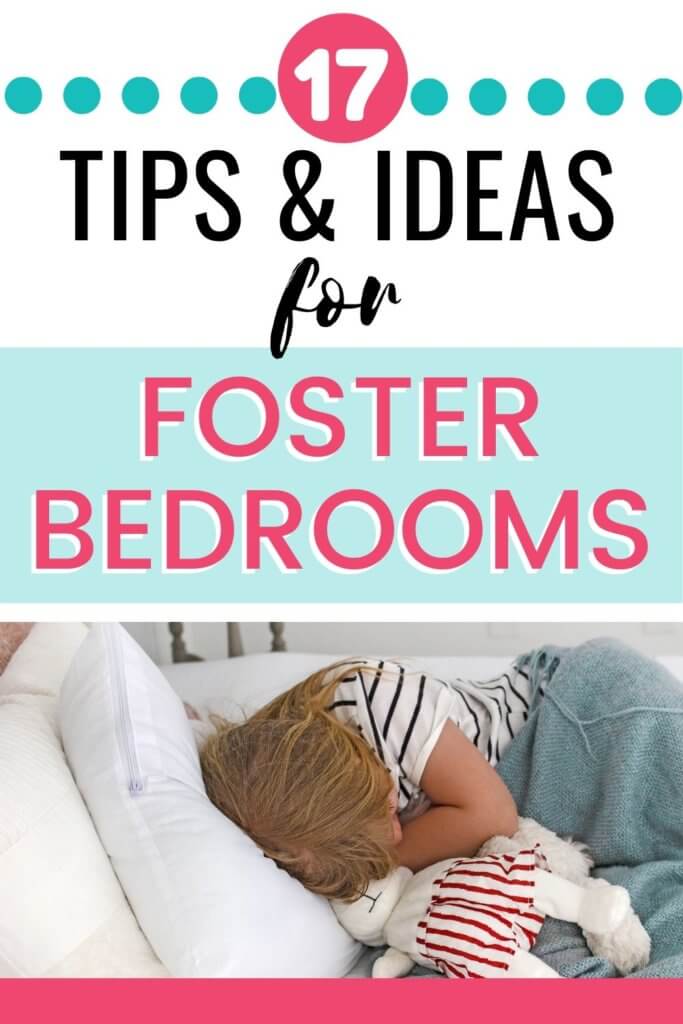
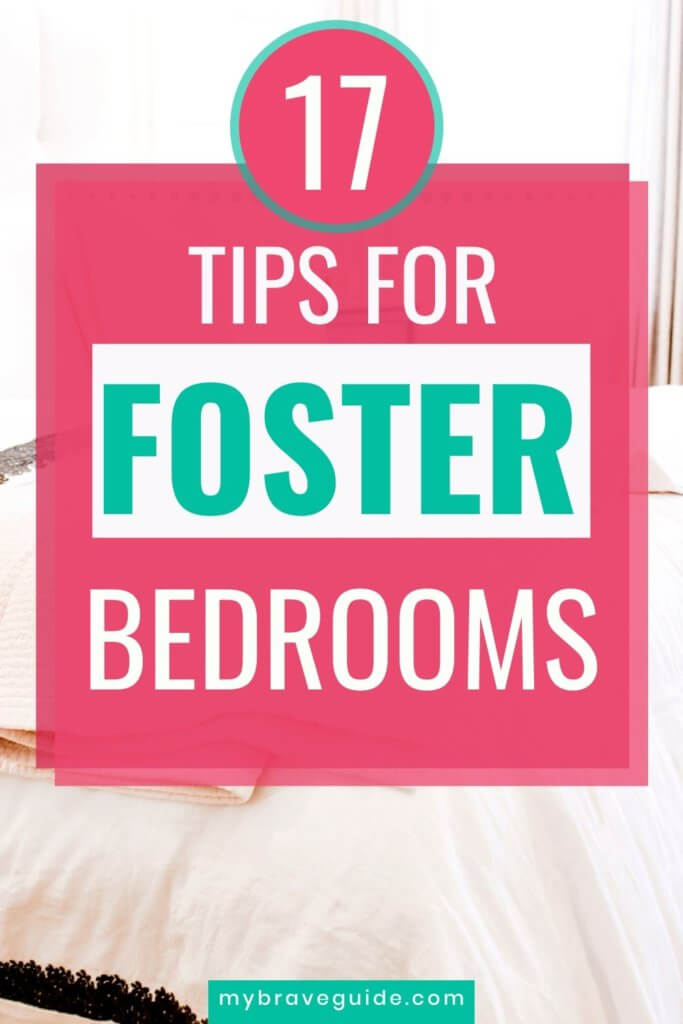
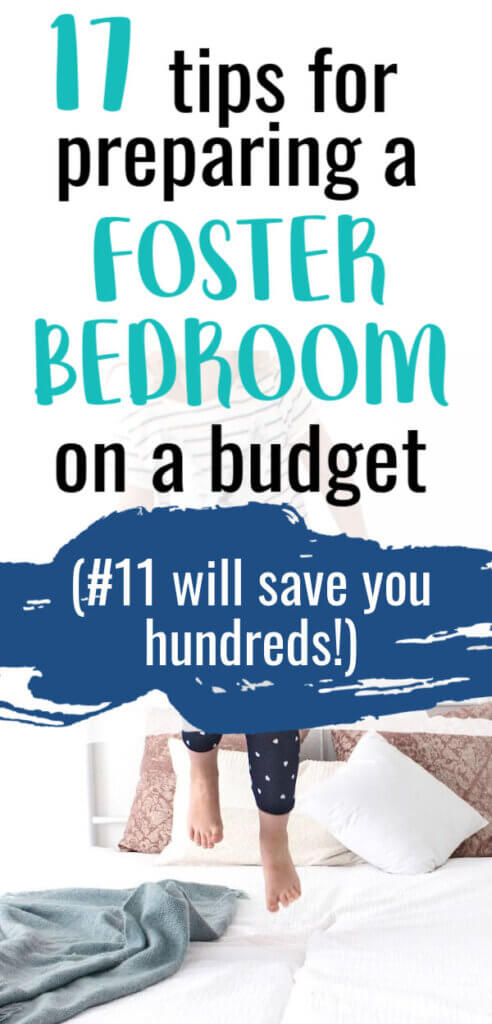
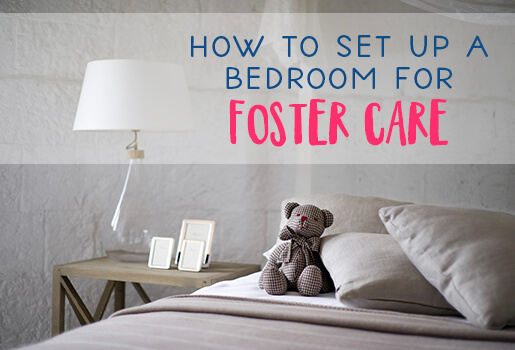











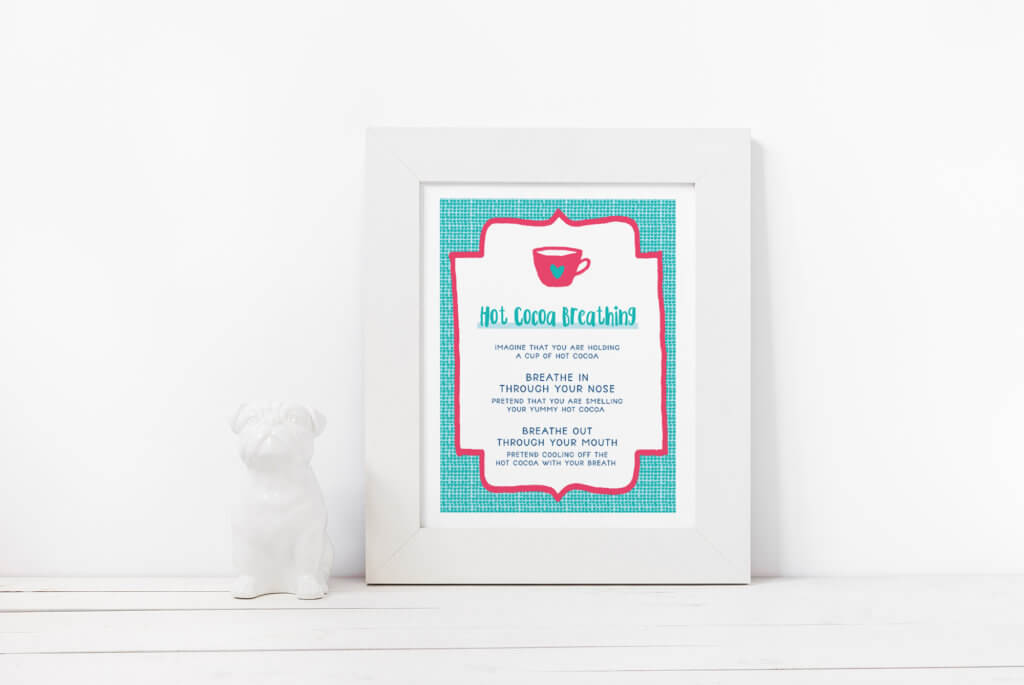
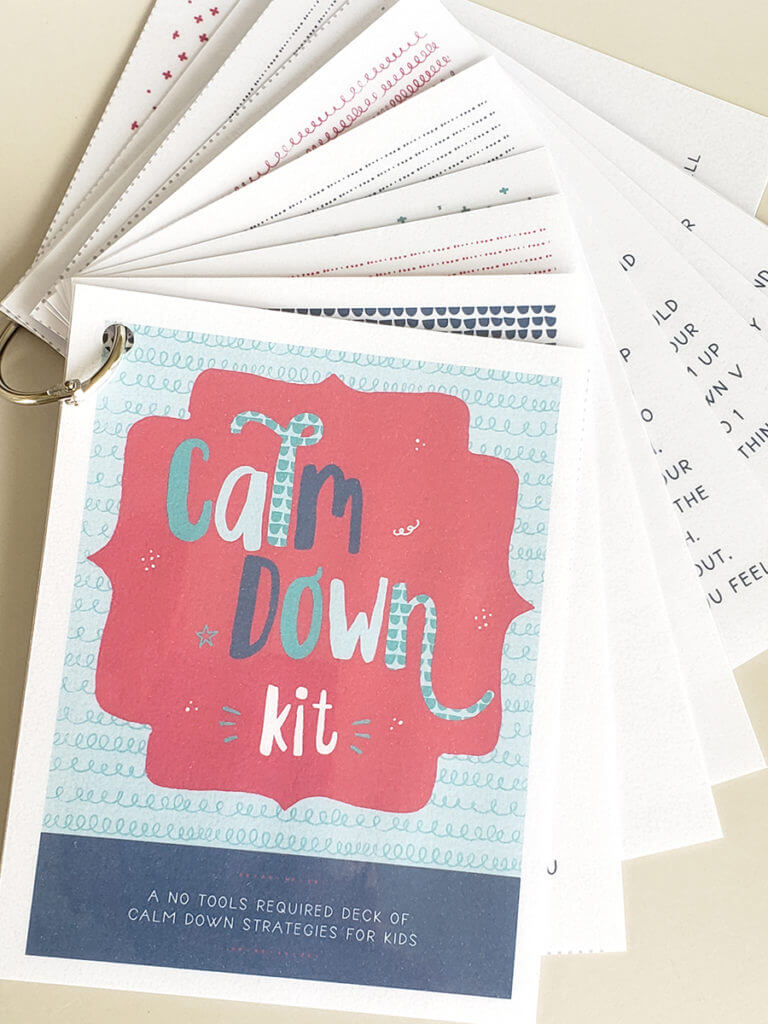


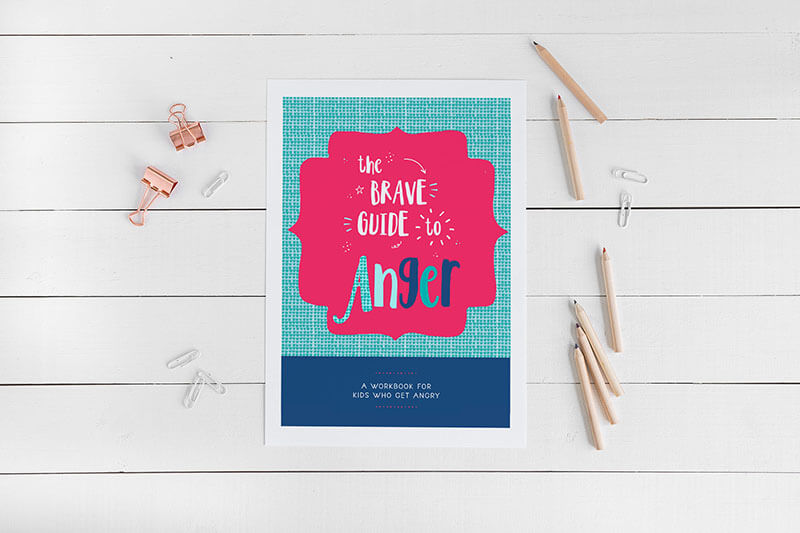

Appreciate this article. I didn’t think about kids destroying the room. I think I’ll go with used furniture instead of buying new like I planned originallly that way if it gets messed up it’s not a big loss.